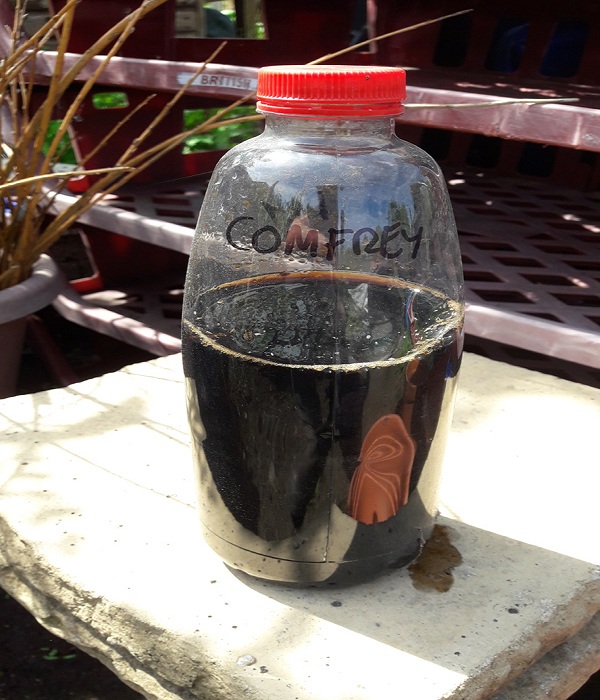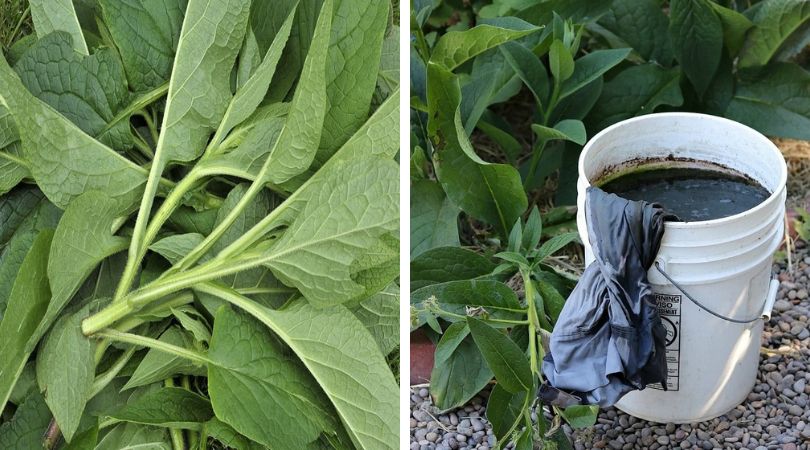Comfrey is an excellent addition to any organic garden because of its wide range of benefits.
In this article, we’ll go over why growing comfrey is a smart idea, as well as how to prepare comfrey liquid feed to fertilize your plants.
Comfrey aids in a variety of ways, from preserving soil fertility to attracting helpful insects.
The comfrey that grows on your property can also be used as mulch, to feed the chickens, and to make a liquid feed for your animals.
The nitrogen, potassium, and phosphorus found in comfrey leaves are critical to plant health. Many of the trace elements that plants require are also found in it.
Comfrey leaves degraded in water produce a liquid feed that is nutritionally comparable to commercial diets.
As a result, comfrey liquid feed is a priceless resource for enhancing plant health, vigor, and output. It’s also really simple to produce, as you’ll learn later in this article.
Why Plant Comfrey?
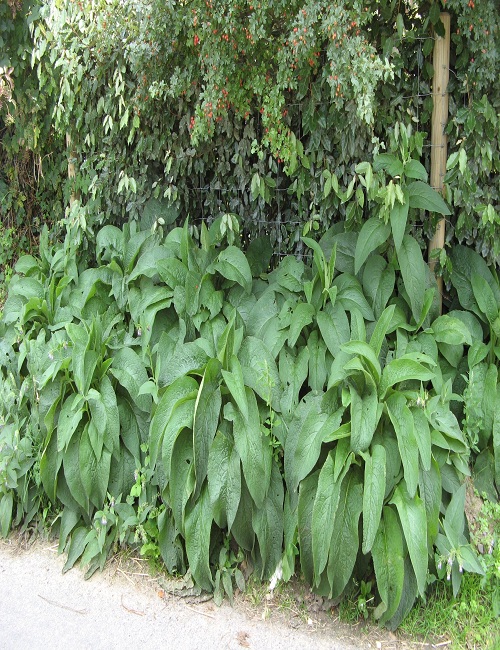
Comfrey’s deep roots make it a powerful nutrient accumulator that can reach all the way down to the very bottom of the soil.
Simply slicing and dropping the comfrey where it grows will return those nutrients to your growing areas.
Using it as a mulch around your crops or making it into a liquid fertilizer, as you’ll discover how to do in this article, are two alternative options for transferring nutrients.
Comfrey’s rapid growth and ability to produce a big amount of organic matter in a short period of time are further advantages. For soil regeneration or improvement, this may be a good thing to do.
Comfrey mulch can increase soil structure and fertility by adding organic matter.
Besides being beneficial to humans, comfrey is also beneficial to bees. Including comfrey in your planting strategy can assist to attract bees and other pollinators to your growing areas because of its lovely blossoms.
Comfrey can also be fed to chickens as a forage or feed supplement, and other animals may also benefit from the addition of comfrey to their diets, so keep that in mind as well.
Interestingly, comfrey provides health benefits for humans and is sometimes used in herbal therapy.
Growing Comfrey
The first step in preparing comfrey liquid fertilizer is to grow the comfrey that you will need.
Choosing the proper varietal and planting it in the right place is critical since once it has established itself, it is nearly tough to remove.
To guarantee that comfrey doesn’t take over your garden, choose a strain that doesn’t proliferate by seed, such as Bocking 14, so you may reap the advantages without having to worry about it spreading.
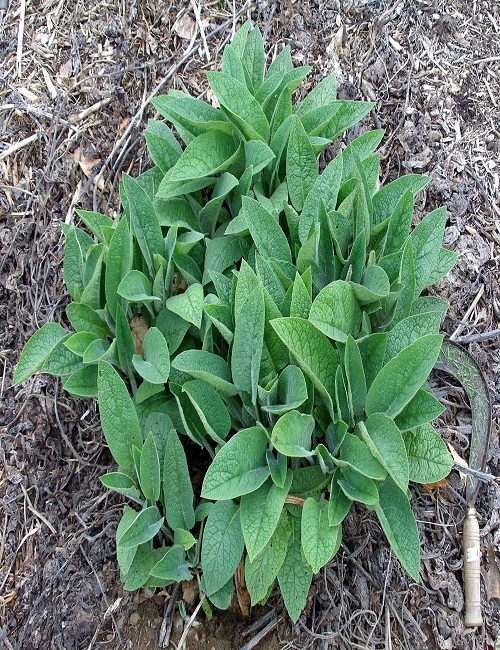
Root pieces or crown offsets are the most common forms of comfrey for sale. Root offsets should have a diameter of 2.5 cm and develop more slowly than crown offsets, but they should produce plants that are just as prolific.
If you have a large garden, you don’t have to acquire more than a few plants, as you can easily propagate more by dividing the original ones and utilizing crown offsets and root offsets to generate more comfrey plants after your plants are established.
It’s possible to grow comfrey in an area that would be unsuitable for most other plants because it can tolerate moist and shady circumstances. Using it in forest gardens, fruit tree guilds or polyculture beds with a variety of perennials might also be an excellent choice.
Harvesting Comfrey to Make Liquid Fertilizer

Comfrey can usually be harvested twice during the summer.
A second harvest will be possible if you cut the plants down to their roots. You cut comfrey for mulch in late June/early July, and again in August to make a liquid feed out of it.
Although you could use a mower to harvest a huge comfrey patch, harvesting comfrey amidst other plants is usually best done by hand.
You’ll need a pair of gloves to protect your hands from the slightly scratchy stems, as well as a pair of scissors. Comfrey can be tolerated by some people with ease, but others with particularly sensitive skin should avoid it.
To prepare your liquid fertilizer, you will use the entire above-ground portion of the plants, including the stems, leaves, and flowers.
How to Make Comfrey Fertilizer?
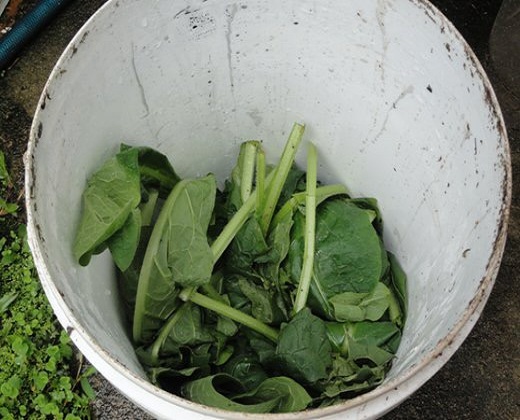
The first step is to gather the comfrey that you have.
To produce your liquid feed, use a large bucket, bin, or another receptacle with a lid (a 55-gallon barrel or drum would be ideal for a large batch, or a five-gallon bucket for a little batch). In order to quickly remove any excess liquid, it helps if the container has a spigot at the bottom.
In order to maximize volume, press the foliage to the bottom of the container and fill it to the brim. If you chop the chunks into smaller and smaller pieces, the water will break them down much more quickly.
Make sure the comfrey is completely submerged in water by placing something on top of it to keep the plant materials from floating to the surface.
Put the receptacle’s lid on top to finish it off. (This is a crucial step.). Comfrey liquid feed, or comfrey tea, as it is commonly called, is a foul drink that you will learn about soon enough. Once the decomposition process begins, the smell is unpleasant. Because of this, you should also avoid brewing your comfrey tea too close to a seating area or to your home.)
Leave the comfrey in the water to disintegrate. The comfrey will decompose and rot over the course of four to six weeks, at which point the resulting liquid can be used.
You can dilute your comfrey mixture at a 10:1 ratio with water after it has rotted down. (ten parts water to one part of this liquid). This will result in a balanced mixture. Plants can be damaged if you use a stronger mix.
Utilizing Comfrey Liquid Fertilizer
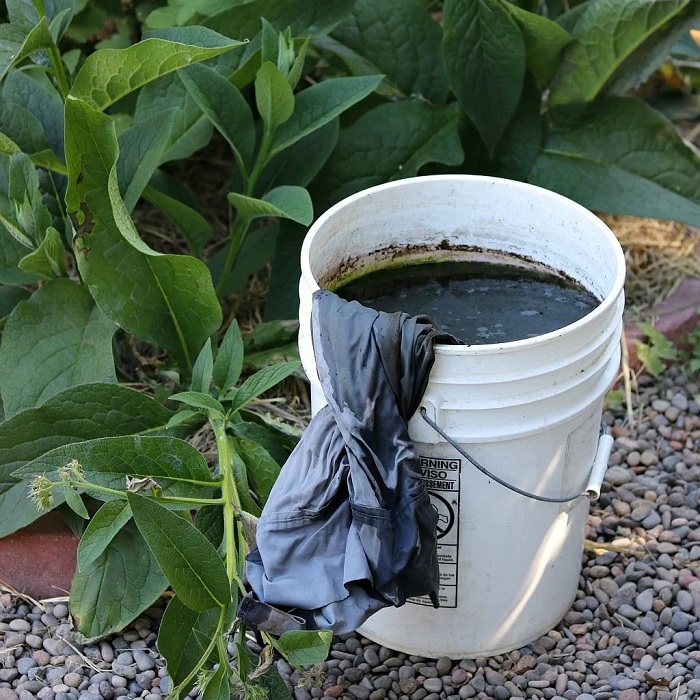
When the comfrey liquid feed is ready, you may use part of it in your polytunnel to give a boost to fruiting tomato plants and other fruiting crops.
Fill watering can about three-quarters full with the liquid, then top it off with more water. Then you can just use it to water the plants.
This solution can also be used as a foliar feed for your plants.
It can help plants during their early development, when they are moved into their ultimate growing locations, and when flowers and fruits begin to appear.
Potassium, which is abundant in comfrey feed, is critical to a variety of functions throughout a plant’s life cycle, including the movement of water. Potassium is particularly important during the periods of growth and reproduction.
Comfrey Liquid Fertilizer Storage
It is also possible to store undiluted comfrey liquid feed for future use.
The liquid comfrey fertilizer can be stored in a cool and dark place so that it can be used throughout the year to maintain fertility and improve plant health.
Using comfrey liquid feed to maintain and improve your organic garden is one of the simplest liquid fertilizers that you can make at home.
So why not grow some comfrey where you live and use it to make comfrey liquid feed to nourish your plants?
